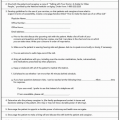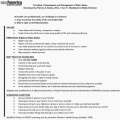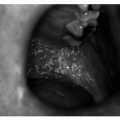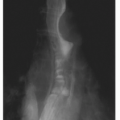CLINICAL PEARLS
Chronic disease management and prevention of functional impairment are major goals of elder care across delivery sites.
Interdisciplinary comprehensive assessment and long-term interdisciplinary management improve outcomes.
Implement systems to improve safety across sites of care.
Recognize delirium as a major adverse event in an acute illness.
Reduce adverse drug events and polypharmacy.
Avoid treatment of asymptomatic bacteriuria.
Treat pneumonia at home and in the nursing home when possible.
Anticipate functional decline during acute illness.
Establish indications for palliative care early and review the indications following a significant change in clinical condition.
Learn to recognize symptoms of dying.
Chronic diseases and functional impairment are major challenges in the care of the older patient. Patients aged 75 years and older are different from the young, both in terms of physiology and the frequent presence of multiple comorbidities. Among older patients, acute illness is often an acute exacerbation of one or more underlying chronic conditions. Stabilization, relief of symptoms, preservation and/or restoration of function, and prevention of recurrences are the primary aims of treatment in the older adult, regardless of whether care is provided at home, in the hospital, or at the nursing home.
In general, for patients older than 75 years with cognitive and/or functional impairment and for patients with
multiple chronic illnesses, the principles of management of acute illness and chronic conditions are similar. Care is directed toward preventing exacerbations, maintaining function, and providing good pain control while avoiding adverse drug effects, infections, and injury.
Evaluation of symptoms in older adults involves the recognition that different illnesses may present with similar symptoms. For example, the episode of delirium described in the above clinical vignette has many potential etiologies, including infection, cardiovascular events, adverse drug effects, constipation, and dehydration. Evaluation should begin with an understanding of the patient’s baseline functional status, a detailed history, and a thorough physical examination. Particular attention should be paid to the patient’s medication list and medications that may be bought over the counter. Older individuals often take several vitamin and herbal supplements, and side effects from such medications should be considered when evaluating the patient’s symptoms.
Programs or efforts that begin with a detailed assessment of the older patient’s medical, functional, cognitive, and social status and address acute and chronic issues concurrently have been shown to improve outcomes.
1,
2,
3,
4 Outcome measures must include the patient’s values and goals. For example, older patients by themselves or through a health care proxy may choose to forego artificial nutrition and hydration or other forms of treatment when faced with a heavy burden of chronic illness and advancing age.
ORGANIZATION OF CARE
Ambulatory Care
A primary care approach combining an initial interdisciplinary, comprehensive assessment with long-term interdisciplinary outpatient management has been shown to improve outcomes for targeted older adults.
5 The assessment involves physical, psychosocial, and environmental factors that impact on the well-being and function of older individuals. The use of an organized approach employing objective measurements helps target key areas of functional status. Evaluation areas include ADLs, cognition, mood, social supports, gait and falls, nutrition, sensory impairments, incontinence, polypharmacy, elder abuse, pressure sores, pain, and advance directives.
6A primary care clinician who organizes and coordinates outpatient care that meets the complex needs of functionally impaired older adults may achieve outcomes similar to those of an interdisciplinary team. In these cases, the care plan inevitably includes services delivered by an ad hoc multidisciplinary team. Geriatric assessment centers have been developed to implement preorganized interdisciplinary teams and enhance traditional primary care management.
Care in the Hospital
Hospital programs have embraced the patient-centered care model. These models include intensive review of medical care with a view to minimizing the adverse effects of procedures and medications. They have established protocols for prevention of disability and for early rehabilitation. Hospital programs implement discharge planning early in the admission to develop a continuum of care plan. Taken together, these interventions reduce the incidence of delirium, lower the frequency of discharge to institutions for long-term care, and reduce health care costs.
1,
2,
4 Some programs use geographically defined units with specialized personnel. Others have enhanced the training of existing hospital personnel who serve patients meeting the criteria throughout the hospital.
In some facilities, a practitioner can order geriatric hospital services for at-risk older adults during hospitalization as a holistic service. Alternatively, the practitioner may act more independently, applying the principles of careful medication management and medical procedure review to minimize adverse outcomes, and ordering specialty services such as physical therapy as needed. Either pattern may reduce functional loss and the length of hospital stay if implemented with input from social workers and rehabilitation services.
Care in the Long-term Care Facility
Long-term care residents are usually dependent in three or more ADLs and have one or more sources of disability, such as Alzheimer disease, multi-infarct dementia, stroke, chronic heart disease, chronic obstructive pulmonary disease (COPD), and osteoarthritis. Care is multidisciplinary, involving the collaboration of physicians, nurses, nursing aides, physical therapists, speech therapists, occupational therapists, and social workers.
The federal Medicare program requires a physician to see the nursing home resident at least once every 30 days for the first 90 days after admission and at least once every 60 days thereafter. Physician visits may be alternated with visits by a nurse practitioner. Because the physician may see the patient infrequently, a Minimum Data Set (MDS) has been developed to help the nursing staff recognize and evaluate common clinical syndromes that occur in nursing home residents. Certain answers on the MDS trigger the use of resident assessment protocols (RAPs) to facilitate nursing staff-to-physician communication about clinical issues.
7Many nursing homes do not have daily attendance by a physician and depend upon telephone contact with a physician. As a result, physician orders are frequently given over the telephone. Many facilities use nurse-driven guidelines or protocols for common acute illnesses such as pneumonia. This standardization reduces medication error and the need to hospitalize patients for management of many acute illness episodes. Regular presence of a nurse
practitioner or a physician assistant provides support to the nursing staff and families while promoting management of acute illnesses in the nursing home.
TRANSITIONS IN CARE
Exchange of information between care settings is vital for patient safety and to prevent complications arising from poor coordination of clinical services. This interface is called
transitional care. Transitional care is a set of actions designed to ensure the coordination and continuity of health care as patients are transferred between different care settings. In the absence of coordination, care must be provided without full knowledge of the problems addressed, services provided, medications prescribed, or preferences expressed by the patient in the previous setting.
8 Poorly executed care transitions result in medication errors
9 and failure to address the primary purpose of a transfer. In the above case, the nursing home was aware of the allergy to ceftriaxone, but failure to convey the information led to an avoidable hospital admission.
Concise information on diagnosis, allergies, and medication management is vital for safe and efficient transition of care. Transitional care may be improved by keeping the patient and caregiver informed and using advanced practice nurses.
10 Care pathways and protocols, integration of acute and long-term care,
11 identification of patients at risk for complications and poor outcomes,
8 and electronic medical records can improve transitional care.








